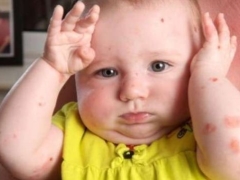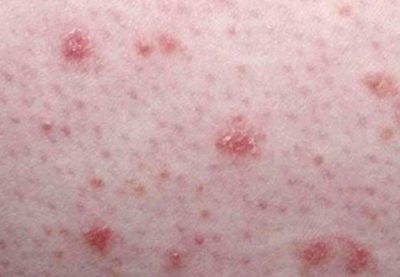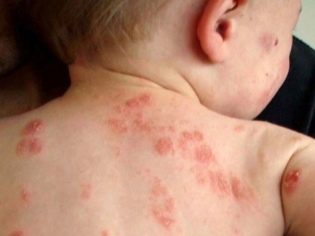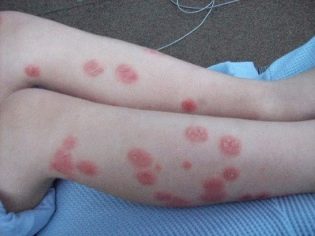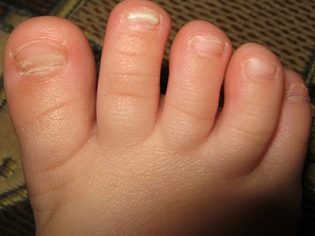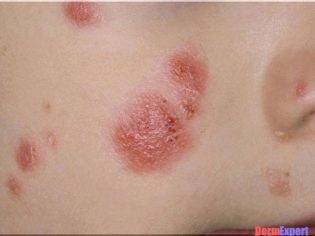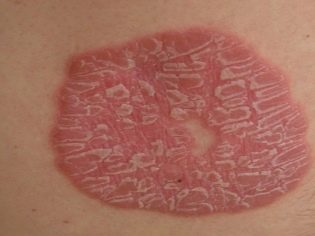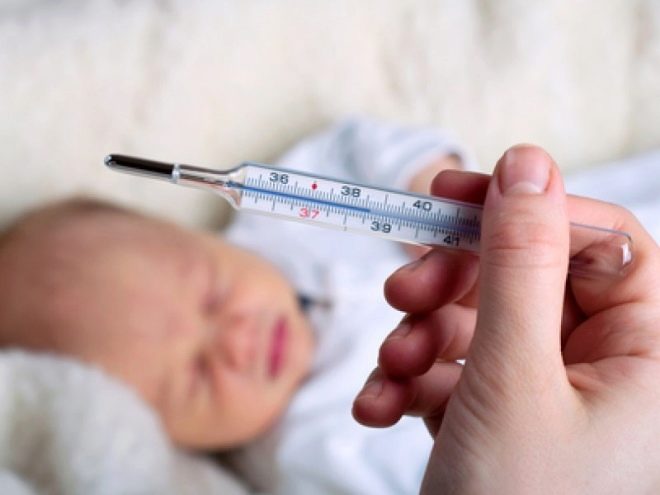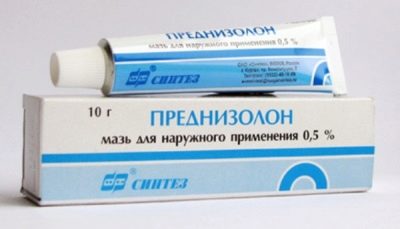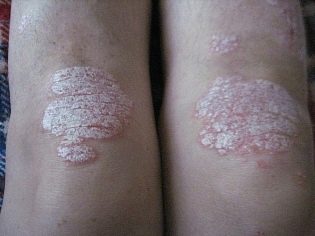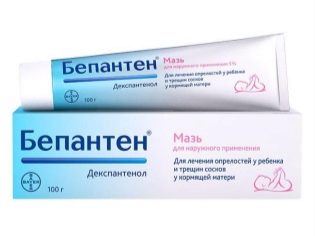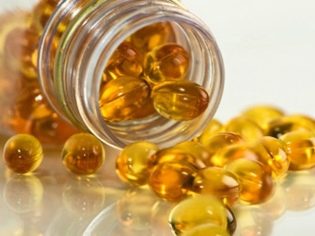What does psoriasis look like at the initial stage?
Timely detection of psoriasis in children gives them a chance to improve the quality of life in the future, because medical care, proper care and nutritional nutrition reduce attacks of the disease to a minimum. In this material we will describe exactly how the initial stage of childhood psoriasis looks and how to distinguish this ailment from other dermatological diseases.
First signs
The initial stage of scaly depriving (this is the second official name of psoriasis) in children is not as easy to recognize as it seems, but nothing impossible for attentive parents does not exist. This stage is called the earliest because it develops as the first sign of a disease that has begun.
On the skin of the child appear small papules pink or red. They have a somewhat glossy surface, but change quickly over several days. The head of the papules becomes grayish or silvery with pronounced signs of exfoliation.
With a light touch, the epithelium easily exfoliates, and under it forms a bright glossy pink surface.
Papules slightly protrude above the level of the skin. They quickly grow in size, merge with each other, forming the so-called psoriatic plaques. If dry silvery or whitish scales are removed from the plaque (and it is very easy to make it), the skin under them will be so thin that it becomes easily vulnerable, and even a small impact can cause bleeding due to the increased number of capillaries.
The initial stage of psoriasis in children in about half of all cases accompanied by symptoms such as itchiness The child will try to comb papules. Abundant plaque proliferation completes the initial stage, which usually lasts several weeks. Begins the progressive phase of the disease.
Symptoms of the initial stage largely depend on what type of psoriasis struck the child. In the reverse form, for example, pronounced papules do not pour out, but there are red smooth spots that do not protrude above the skin in the folds of the skin, in the groin, on the elbows, under the arms. In guttate psoriasis, the rash at the initial stage resembles bright red or purple specks, small droplets. They appear on a large area, sometimes covering the whole body.
With a rather dangerous pustular psoriasis, the skin becomes covered with pustules that are filled with a watery transparent liquid, and with erythrodermic psoriasis large fragments of desquamation appear - exfoliating, large pieces of the epidermis are separated.
Psoriasis favorite places are elbows and knees, often rashes appear on the body, neck, scalp, hands and face.
In newborns, infants and small children under 2 years old, the first papules appear almost always in the folds of the skin. In babies after the age of two, the first papules appear more frequently on the arms and legs.
Nail psoriasis may accompany general psoriasis, and may be a separate disease in which only the nail plates are affected. It begins with the appearance of longitudinal strips on the plates, small depressed points, then the nail plate is partially discolored. The nail looks thick and massive and, if left untreated, can peel off completely.
Differences from other diseases
It is important to distinguish psoriasis from other possible children's dermatological problems. From allergies papules of psoriasis are more saturated color. With the start of taking antihistamines, the allergic rash diminishes and becomes dull; this does not happen with psoriatic papules and plaque.They continue to grow and spread.
From diaper dermatitis, the initial manifestations of psoriasis differ in shape and color. Chilliness, diaper rash and dermatitis do not have such clear and even papular margins. In addition, papules in psoriasis are not exposed to the effects of powder, air, which help in a short time to save the child from prickly heat. Psoriasis plaques continue to grow, the powder causes them to peel even more, as it dries the skin.
From viral and bacterial infections, which are also accompanied by the appearance of papules and pustules on the skin, psoriasis is distinguished by the absence of any additional symptoms. Infectious rash is most often contagious and is accompanied by fever, respiratory manifestations, muscle and joint pain. With psoriasis, there are no such symptoms.
Treatment
The earlier the treatment is started, the more chances to achieve stable remission. Cure psoriasis completely, unfortunately, is impossible. And even early treatment and proper therapy will not help make the child completely healthy. But early treatment will save the baby from frequent attacks of the disease.
At the first signs of a child starting a disease, they are hospitalized. In the future, this is no longer needed, and the attacks can be stopped at home. From severe itching, prescribe antihistamines, and with them calcium preparations. With heavy plaques and tendencies to further growth can be assigned hormonal drugs, such as "Prednisolone».
For the treatment of plaques use moisturizers - "Bepanten", The usual children's cream, as well as the ointment" Colloidin "," Antipsorin ","Sinaflane, Flutsinar. The child is advised to bathe more often, to make wet lotions, since the skin is critically in need of moisture.
Immunosuppressants can be prescribed to the child - drugs that can suppress the activity of immune processes, since the autoimmune cause of psoriasis is considered to be the most convincing today. In fairness, we note that the true causes of the disease are still unknown to medicine and science.
At the initial stage of psoriasis, it is recommended to undergo treatment of all possible foci of infection in the body - to heal aching teeth, remove the tonsils, if there are problems with adenoids, to treat chronic tonsillitis.
The child is prescribed a special diet for diets that are devoid of animal fats. The child is shown cereals, cereals (with the exception of rice and semolina), fish, skimmed milk and cottage cheese. Such diets help improve the condition of the skin in just 7-10 days and subsequently maintain long-lasting states of remission.
Among folk remedies, effectiveness shows thistle oil, fish oil, sea buckthorn oil and birch tar. But do not substitute drug treatment folk. Recipes of alternative medicine are intended only to help, but they cannot claim independent action.
If the child is already well aware of what is happening, at the initial stage of psoriasis, psychological help and support should begin. With psoriasis will have to somehow live, in any case, until the development of effective drugs.
What a terrible word psoriasis, and how to treat it? See this in the next video.
